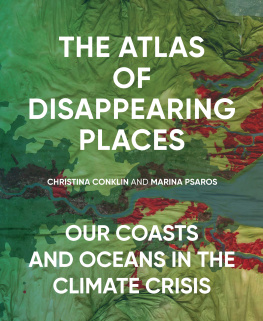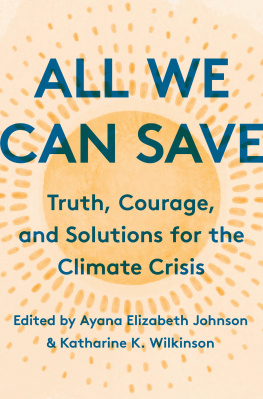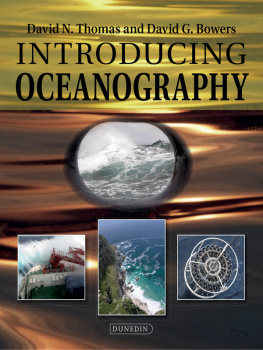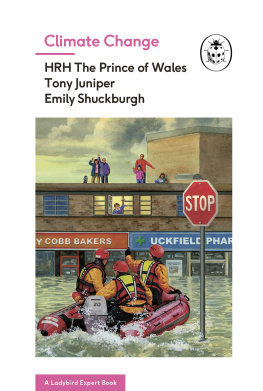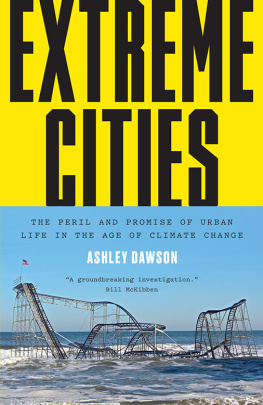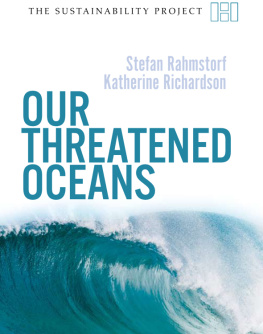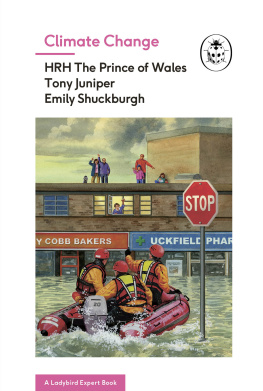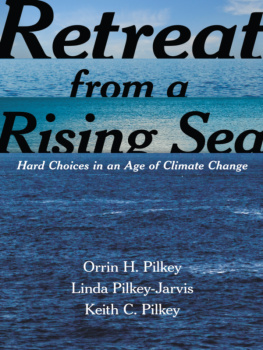Contents
Page List
Guide
THE ATLAS OF DISAPPEARING PLACES
THE ATLAS OF DISAPPEARING PLACES
OUR COASTS AND OCEANS IN THE CLIMATE CRISIS
Christina Conklin and Marina Psaros
MAPS AND ILLUSTRATIONS by Christina Conklin
NEW YORK
LONDON
To the ocean, and all the people acting bravely to change the story of our fragile, fluid planet.
And to the readers who find this in a used bookstore in fifty years and do what is needed next.
Christina Conklin
To my father, who gave me a love of the sea. To my mother, who named me after it. And to my children, who will inherit it.
Marina Psaros
CONTENTS
by Marina Psaros
by Christina Conklin
FOREWORD
Climate change is causing treasured coastal places and marine resources to disappear. Storms have washed away a great many coastal properties and continue to erode beaches and shorelines. Warming waters have melted ice in the Arctic and the Antarctic, releasing the most potent greenhouse gases of all and threatening coastal communities with rising sea levels. Changing water chemistry is destroying crucial marine habitats, altering the balance of aquatic life, and creating threats and challenges to human health. Rising seas (and increasingly intense storms) are making it impossible to sustain public infrastructure and forcing communities to abandon long-cherished areas and historical sites.
Marina Psaros and Christina Conklin provide twenty stories of the impacts that these climate-driven changes are having all over the world. They present their work in the form of a visually engaging and creative atlas, but their goal is to pinpoint the serious and difficult choices facing governments, companies, communities, and individuals. We have to decide whether we are going to do anything to protect ourselves and our planet, and if so, what?
Climate mitigation refers to the ways we can reduce greenhouse gas emissions and halt the long-term warming of the planet. Climate adaptation focuses on the means by which communities can blunt a range of climate change impactswhich are already inevitableand enhance local resilience. People all over the world need to wrestle with both. The obvious adaptive responses in coastal areas are to waterproof buildings, build sea walls, harden critical infrastructure like water treatment and waste disposal plants (so they can withstand increased flooding), and rely more on green buffers and wetlands to absorb coastal impacts. The less appealing measures are to abandon certain areas altogether by buying out landowners and explaining to them that public services can no longer be rebuilt each time they are destroyed by floods or storms. There are small island nations around the world that have no choice but to pick up now and move to inland locations, abandoning their history, culture, and property. The choices are painful.
While individuals need to educate themselves about their resiliency, the majority of adaptation decisions need to be made collectively. That is, whole communities must decide which trade-offs they want to make and how they want to use their public resources. It is unlikely that state/provincial or local governments are going to force individual landowners to abandon their coastal or riverine properties, but they may have no choice but to tell those same individuals they are on their own. Taxpayers might be willing to compensate them if they move, but if they stay, there will not be critical infrastructure and public servicespaid for by everyone elseavailable to them after a certain date. Adaptation policies, or collective decisions about how to plan for climate change, are difficult. First, they are science-intensive. That is, policies must be built on the best available scientific and technical knowledge and forecasts. They have to reflect more than opinions. At the same time, these decisions are inherently political. Whenever there are gains and losses to be allocated across different groups and generations, there are winners and losers, and politics are involved. At the very least, all stakeholders deserve to have a say in these decisions. Elected and appointed officials will be held accountable for the choices that are made.
Another reason adaptation decisions are so difficult is that there is enormous uncertainty involved. The socio-ecological systems we are talking about are so complex that we cannot model them precisely or anticipate the ways in which they are likely to evolve. In the face of such uncertainty, collective decision-making usually gets put off. But thats not possible in this case. Making significant commitments when big risks are involved is usually a prescription for inaction. The consensus-building efforts required to generate community-wide agreement on the technical and political aspects of adaptation are beyond what most communities (anywhere in the world) can muster.
Climate risk management in the face of uncertainty requires both scenario-planning and contingent decisions. Neither is part of how things are usually done at present. The stories in this atlas make this clear. Scenarioplanning means laying out multiple possible futures and thinking through the no regrets moves that communities can make, meaning identifying short-term investments or changes in public policy that will, in hindsight, look smart regardless of which future comes to pass. Contingent decisions are those that transform possible actions into a series of small steps that can be taken, one at a time, and can then be reconsidered or reversed in light of interim or provisional findings or results. Instead of scenarios and contingencies, however, most places make long-range plans (for future city development) and try to stick to them. The uncertainties created by climate change, however, require a different approach to shared resource management. We must assume things probably wont go as planned and that continued adjustments will be required. We will have to commit to moving ahead even when we are not certain what the future holds or how our actions will turn out. We will need to lay out multiple courses of actionand commit to them collectivelyahead of time.
Once places have disappeared, they are gone forever. The Atlas of Disappearing Places is a wonderful resource, but lets not wait for subsequent editions to find out what we should have done while we had the chance to save the places we care about.
Lawrence Susskind Ford Professor of Urban and Environmental Planning, Massachusetts Institute of Technology
INTRODUCTION
The world has changed dramatically since the dawn of the new decade. Many aspects of daily life were upended overnight by the COVID-19 pandemic at great economic, social, political, and personal cost. Some people have been resilient amidst the disorientation and distress, while others have been overwhelmed by trauma and loss. Through the pandemic, we have been reminded of our shared humanity and essential vulnerability, and we have seen that our species is capable of responding swiftly to an existential threat. We have seen scientists rapidly pursuing answers and doing their best to describe what needs to happen next; millions of citizens responding with creativity, generosity, and civic responsibility; and some public leaders acting with decisiveness and integrity to address the crisis. Climate change is like this, too: an emergency of global proportions that we must tackle with all the tools at our disposal in order to save lives and livelihoods. Both the pandemic and climate change are unfolding events in our lives that ask us to act on behalf of both ourselves and others. We can either attempt to ignore the call, or we can answer it by bringing forward new leadership and creative solutions for strong communities.

